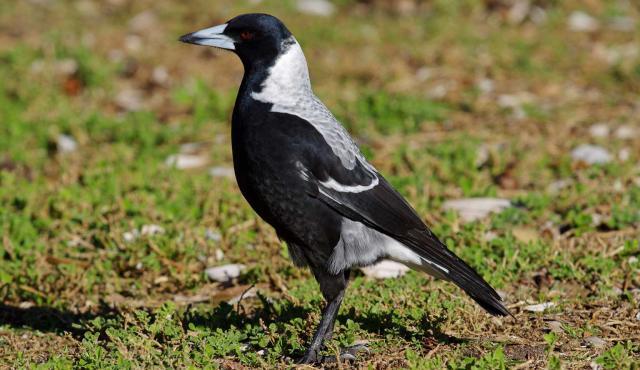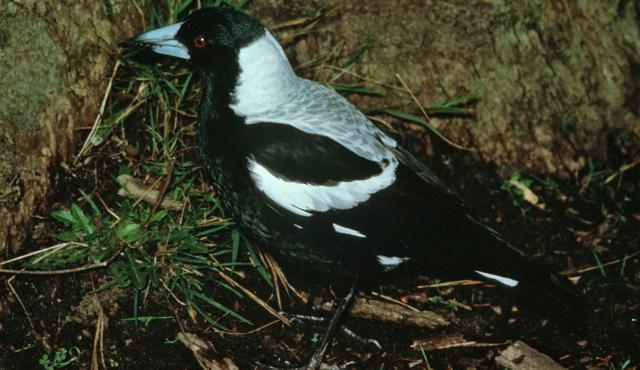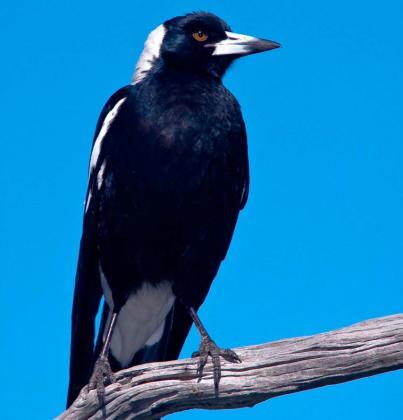




Australian Magpie
Cracticus tibicen
| Details | |
|---|---|
| Type | Bird |
| Group | |
| Former Scientific Name | Gymnorhina tibicen |
| Other Common Names | Black-backed Magpie, White-backed Magpie, Western Magpie |
| Biology | Lives in family groups. The breeding season lasts from June through to December but usually occurs from August-October. Builds a nest in the fork of slender upper tree branches, 5-20 m high. Clutch size is 1-6 eggs and is incubated by the female for 20 days. Young are fed by the female and occasionally the male. The male defends the territory. Young fledge at 28 days. Some individuals become aggressive and swoop intruders during the breeding season. |
| Distinctive Markings | In the south-east, extreme south west and Tasmania the back and rump are white. In areas of the Northern Territory and Western Australia, the black feathers have white margins. |
| Taxonomy | |
|---|---|
| Phylum | Chordata |
| Class | Aves |
| Order | Passeriformes |
| Family | Artamidae |
| Genus | Cracticus |
| Species | tibicen |
Source: Atlas of Living Australia
Australian Magpies are very well-known Australian birds. Their call is often associated with the Australian bush.
| Interesting Facts | |
|---|---|
| Diet | Omnivore. Searches on the ground for insects and insect larvae. Will feed from human scraps. |
| Habitat | Usually eucalypt woodland close to tree-lined rivers, partly cleared land. Adapted to parks and playing fields. Avoids dense forests and arid deserts. |
| Native Status | Native to Australia |